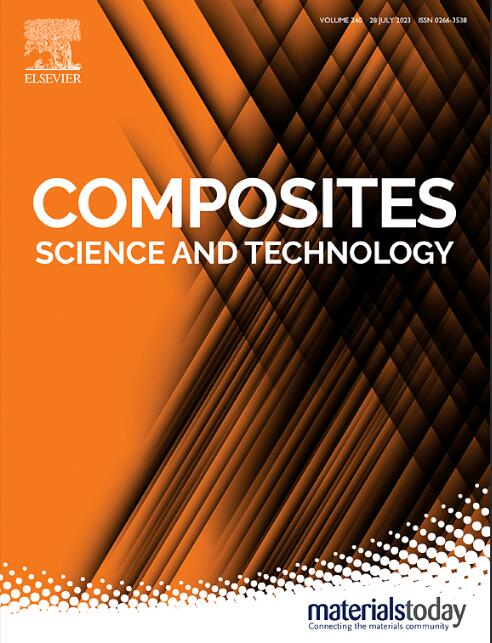利用无损π -π表面工程增强芳纶纤维化学金属化的电磁干扰屏蔽
IF 8.3
1区 材料科学
Q1 MATERIALS SCIENCE, COMPOSITES
引用次数: 0
摘要
随着5G和6G技术的快速发展,电磁污染已成为人们日益关注的问题,迫切需要能够屏蔽电磁干扰(EMI)的轻质柔性材料,同时还能提供高导电性、强机械性能和可靠的环境稳定性。芳纶纤维增强复合材料由于其优异的强度和耐热性已经广泛应用于航空航天电子领域,显示出有效屏蔽电磁干扰的巨大潜力。然而,由于芳纶纤维具有化学惰性,因此很难实现电磁干扰涂层与纤维表面之间的强附着力,这限制了实际应用。虽然化学蚀刻可以产生金属颗粒附着的活性位点,但它通常会损害纤维的内在机械性能。为了解决这一问题,提出了一种无损的π -π修正方法。该工艺在不损坏纤维的情况下将活性位点添加到惰性纤维表面,从而实现均匀且控制良好的化学金属涂层。使用这种方法制备的复合材料显示出卓越的EMI屏蔽性能,超过90 dB。此外,还进行了计算机模拟,以评估这些改性芳纶纤维预成型在大型复合材料结构中应用的可行性。仿真结果与实验结果一致,表明双金属Cu/Ni@AF复合材料具有出色的电磁干扰屏蔽性能。总的来说,这种方法提供了一种安全改性芳纶纤维的新方法,并为更可持续的高性能屏蔽材料铺平了道路。本文章由计算机程序翻译,如有差异,请以英文原文为准。
Enhanced electroless metallization of aramid fibers via non-destructive π–π surface engineering for EMI shielding
Electromagnetic pollution has become a growing concern with the rapid expansion of 5G and 6G technologies, creating an urgent need for lightweight, flexible materials that can shield against electromagnetic interference (EMI) while also offering high electrical conductivity, strong mechanical properties, and reliable environmental stability. Aramid fiber-reinforced composites, already widely used in aerospace electronics due to their excellent strength and heat resistance, show significant potential for effective EMI shielding. However, because aramid fibers are chemically inert, it is challenging to achieve strong adhesion between EMI coatings and the fiber surface, which limits practical applications. Although chemical etching can create active sites for metal particle attachment, it often compromises the fibers’ intrinsic mechanical properties. To address this issue, a non-destructive π–π modification method was introduced. This process adds active sites to the otherwise inert fiber surface without damaging the fibers, thereby enabling a uniform and well-controlled electroless metal coating. Composites prepared using this approach display exceptional EMI shielding performance, exceeding 90 dB. Furthermore, computer simulations were conducted to evaluate the feasibility of applying these modified aramid fiber preforms in larger composite structures. The simulation outcomes are consistent with experimental findings, indicating that the dual-metal Cu/Ni@AF composite delivers outstanding EMI shielding performance. Overall, this method offers a new way to safely modify aramid fibers and paves the way for more sustainable, high-performance shielding materials.
求助全文
通过发布文献求助,成功后即可免费获取论文全文。
去求助
来源期刊

Composites Science and Technology
工程技术-材料科学:复合
CiteScore
16.20
自引率
9.90%
发文量
611
审稿时长
33 days
期刊介绍:
Composites Science and Technology publishes refereed original articles on the fundamental and applied science of engineering composites. The focus of this journal is on polymeric matrix composites with reinforcements/fillers ranging from nano- to macro-scale. CSTE encourages manuscripts reporting unique, innovative contributions to the physics, chemistry, materials science and applied mechanics aspects of advanced composites.
Besides traditional fiber reinforced composites, novel composites with significant potential for engineering applications are encouraged.
 求助内容:
求助内容: 应助结果提醒方式:
应助结果提醒方式:


